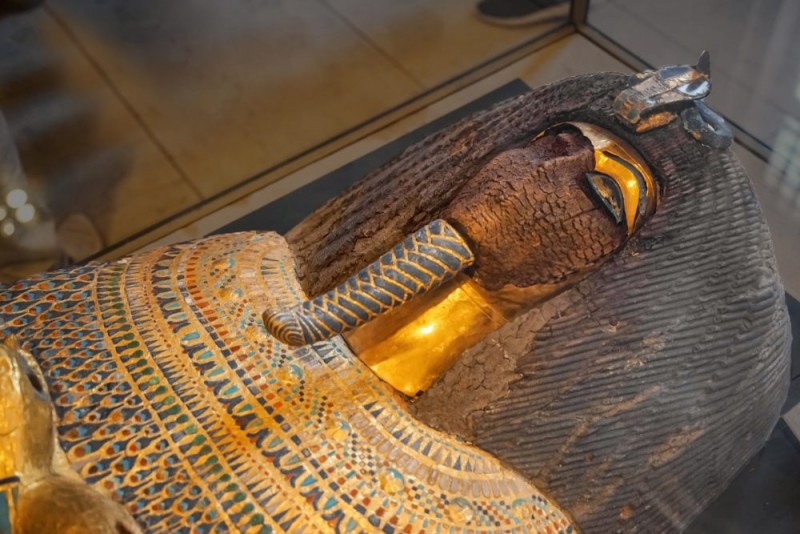
In a surprising turn of events, the mummy of a notorious thief, known as the "Phantom Pilferer," which has been on public display for an astonishing 128 years, is set to undergo cremation. This decision has sparked both curiosity and controversy among historians, archaeologists, and the general public.
The story of the Phantom Pilferer begins in the late 19th century when they embarked on a life of crime that would soon capture the world's imagination. This enigmatic figure, whose real identity remains a mystery, orchestrated a series of daring heists that left law enforcement baffled.
One of the most audacious crimes committed by the Phantom Pilferer was the theft of the priceless "Crimson Jewel," a gemstone with a storied history. This daring heist catapulted them into the annals of criminal history and earned them a reputation as a master thief.
The Phantom Pilferer's reign of terror eventually came to an end when they were finally apprehended by a determined detective. However, what followed was an unconventional and highly controversial decision by the authorities. Instead of the conventional prison sentence, the Phantom Pilferer was mummified, preserving their body for public display.
The decision to mummify the notorious thief was met with shock and fascination. It was a punishment unlike any other in history. While some argued that it was a fitting fate for a criminal who had stolen from the rich and powerful, others believed it was a grotesque form of revenge.
The mummy of the Phantom Pilferer became a sensation, drawing visitors from all over the world to witness this unusual spectacle. The curiosity surrounding the mummy's gruesome origins and the enigma of the thief's identity only added to the fascination.
The museum housing the mummy profited immensely from the continuous display. The Phantom Pilferer's mummy became a significant source of revenue, enabling the museum to expand its collection and provide educational programs.
As time went on, ethical concerns arose regarding the display of a criminal's remains without their consent. The debate centered on whether the public's fascination with the Phantom Pilferer's crimes justified the continued exhibition of their mummified body.
In recent years, descendants of the Phantom Pilferer initiated a legal battle to have the mummy removed from public display. They argued that it was a violation of their ancestor's dignity to have their remains exhibited in such a manner.
The debate over whether historical preservation outweighed the dignity and rights of the deceased intensified. Historians and archaeologists contended that the mummy held immense historical value, shedding light on the criminal justice system and social attitudes of the era.
Ultimately, the court ruled in favor of the descendants, paving the way for the mummy's cremation. The decision was met with mixed reactions. Supporters of the Phantom Pilferer's continued display mourned the loss of a unique historical artifact, while those in favor of cremation saw it as a victory for human dignity.
The cremation of the Phantom Pilferer's mummy symbolizes the conclusion of an era. It serves as a symbol of closure, closing a chapter in history that was both intriguing and morally ambiguous. The mummy's removal from public display marks the end of a century-long spectacle.
While some argue that the mummy's cremation erases a part of history, others believe it's a step toward respecting the dignity of the deceased. The debate over the balance between historical preservation and individual rights continues to resonate in the wake of this decision.
This unique case prompts society to reflect on the boundaries of historical preservation and the rights of those long gone. It challenges us to consider the ethical implications of displaying the remains of individuals who lived in a very different time. In a world where history and ethics often clash, the decision to cremate the Phantom Pilferer's mummy marks the end of a century-long spectacle and ignites a profound conversation about how we remember and respect the past. The story of the Phantom Pilferer will continue to captivate the imagination, but now it serves as a reminder of the evolving values of society and the complex interplay between history and morality.
Indian Railways Unveils Vande Bharat Sleeper Train Set to Redefine Rail Travel
Visit 'France' in India, know how to plan your tour
Those 4 vegetarian dishes of India, even foreigners are crazy about them